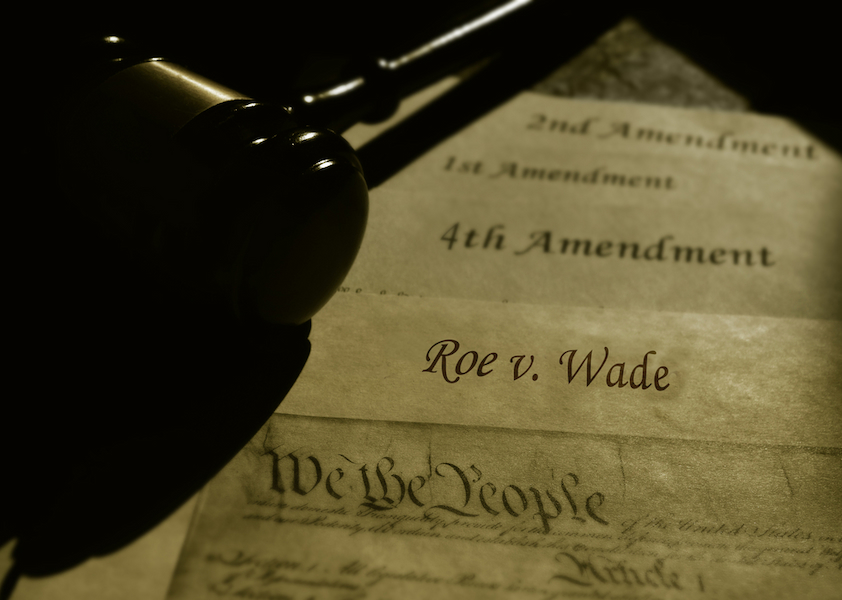Supreme Court Breach Is Not the First Involving Roe v. Wade

The recent disclosure of Justice Samuel Alito’s decision purporting to overturn Roe v. Wade is arguably the most significant breach in the history of the U.S. Supreme Court. However, it is not the first time that a landmark abortion decision was made public before the Court announced its decision. What makes the current disclosure so monumental is that the entire draft opinion was leaked.
Leak of Draft Decision in Dobbs v. Jackson Women’s Health Organization
On May 2, 2022, Politico published a draft opinion by Justice Alito that would overrule the Supreme Court’s controversial decision in Roe v. Wade and erase 50 years of abortion law precedent. The case, Dobbs v. Jackson Women’s Health Organization, was argued in December and centers on whether all pre-viability prohibitions on elective abortions are unconstitutional. However, in defending its controversial abortion law, the State of Mississippi has asked the Court to overturn its prior decisions in Roe v. Wade and Planned Parenthood v. Casey.
In his opinion, Justice Alito overturns both the Court’s landmark decisions. “Roe was egregiously wrong from the start,” his draft, dated February 10, 2022, states. “Its reasoning was exceptionally weak, and the decision has had damaging consequences. And far from bringing about a national settlement of the abortion issue, Roe and Casey have enflamed debate and deepened division. It is time to heed the Constitution and return the issue of abortion to the people’s elected representatives.”
Chief Justice John Roberts confirmed that the document described in the report was authentic, and it did not represent a decision by the Court or the final position of any member on the issues in the case. As Chief Justice Roberts also noted, justices frequently circulate draft options as part of the deliberative process. Because they are not final, it is essential that they remain confidential. “This was a singular and egregious breach of that trust that is an affront to the Court and the community of public servants who work here,” the Chief Justice wrote in a public statement. “I have directed the Marshal of the Court to launch an investigation into the source of the leak.”
Previous SCOTUS Leaks
While the recent breach of confidentiality is unparalleled, it is not completely unprecedented for decisions to be first disclosed by someone other than the Court. In fact, the original Roe v. Wade decision was reported by Time Magazine before it was released, although it was largely unintentional. As Bloomberg reports, Larry Hammond, a clerk to Justice Lewis Powell, shared the information about the Court’s decision “on background,” and the magazine had promised that it would not publish the information until the opinion was officially released. However, due to a delay in printing the Supreme Court opinion, the Time Magazine article came out first.
Hammond admitted what had happened and tendered his resignation. While he kept his clerkship, the incident led Chief Justice Warren Burger to establish the “20-second rule,” under which any clerk caught speaking with the media would be fired in 20 seconds.
There have been other notable breaches in Supreme Court history. In 1852, the New York Tribune reported that the Supreme Court would rule inPennsylvania v. Wheeling and Belmont Bridge Co.that the bridge could be removed because it interfered with interstate commerce ten days before the decision was announced. Many have speculated that Justice John McLean, who authored the majority opinion, provided the newspaper with the scoop. It is also suspected that Justice McLean provided inside information about the Court’s deliberations in the landmarkDred Scott v. Sandfordcase.
In recent years, members of the media have accurately reported likely rulings in high-profile cases, suggesting that they had access to otherwise confidential information from people inside the Court. Examples include the Court’s 2012 decision upholding the Affordable Care Act and its 2019 decision ruling that discrimination on the basis of sexual orientation or transgender status is illegal.
Several books have also been written that relied on “inside sources” to reveal the inner workings of the Court, including The Brethren, by Bob Woodward and Scott Armstrong; Closed Chambers by a former law clerk to Justice Harry Blackmun, Edward Lazarus; and Sorcerers’ Apprentices by Artemus Ward and David Weiden.
While there is some precedent, the recent leak in Dobbs v. Jackson Women’s Health Organization is quite different — it is the first time that a fully-formed draft opinion has been leaked to the media. Accordingly, its impact on Court’s operations and the current political climate will likely be much more significant.
Additional Roe v. Wade Articles on the Constitutional Law Reporter
Abortion Rights Took Center Stage During Busy Week for Supreme Court
Abortion Returns to SCOTUS in December with Challenge to Roe v. Wade
Roe. v. Wade: Still Generating Controversy Almost Forty Years Later
Previous Articles
Justices Skeptical of Trump Administration Tariffs
by DONALD SCARINCI on December 18, 2025
The U.S. Supreme Court heard oral arguments in Learning Resources, Inc. v. Trump (consolidated with...
SCOTUS Takes Up Key Election Case Involving Mail-In Ballots
by DONALD SCARINCI on December 17, 2025
The U.S. Supreme Court recently granted certiorari in a key election case, Watson v. Republican Nat...
SCOTUS Adds Second Amendment Case to Docket
by DONALD SCARINCI on November 27, 2025
The U.S. Supreme Court will consider another important Second Amendment case this term. The latest ...
The Amendments
-
Amendment1
- Establishment ClauseFree Exercise Clause
- Freedom of Speech
- Freedoms of Press
- Freedom of Assembly, and Petitition
-
Amendment2
- The Right to Bear Arms
-
Amendment4
- Unreasonable Searches and Seizures
-
Amendment5
- Due Process
- Eminent Domain
- Rights of Criminal Defendants
Preamble to the Bill of Rights
Congress of the United States begun and held at the City of New-York, on Wednesday the fourth of March, one thousand seven hundred and eighty nine.
THE Conventions of a number of the States, having at the time of their adopting the Constitution, expressed a desire, in order to prevent misconstruction or abuse of its powers, that further declaratory and restrictive clauses should be added: And as extending the ground of public confidence in the Government, will best ensure the beneficent ends of its institution.





